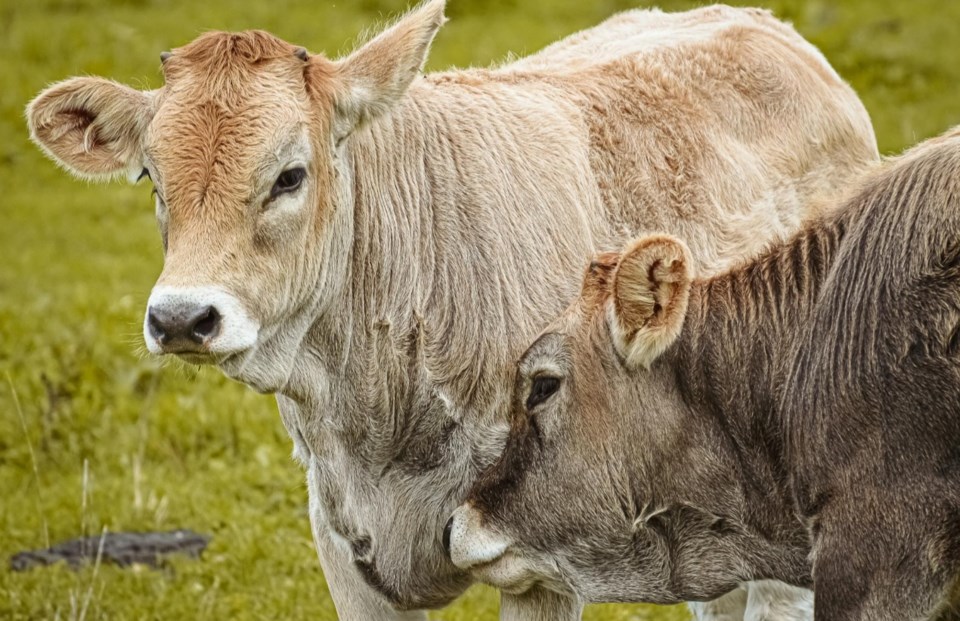ALBERTA - The Beef Cattle Research Council had Dr. Elizabeth R. Homerosky, DVM MSc DABVP (Beef Cattle), speak at a webinar in January 2024 on Raising Heifers for Reproductive Success.
“Your first year might be a bit of an eye opener.” said Homerosky in her talk.
There are a few boxes you have to check to achieve 85 per cent conception rates.
Getting heifers to about 55 per cent of mature body weight with our extreme temperatures is key.
Spring grass acts as your flushing effect. This works better for those true spring calving herds said Homerosky.
She also recommends shortening up your breeding season. The maximum is 42 days, but 30 days is optimal.
Homerosky found out that their heifers maybe weren't as efficient as they thought with results around 70 per cent in two cycles and after years of focus has achieved 85 per cent in two cycles.
The objective of what percentage of mature body weight is optimum has changed with ongoing research, as per Homerosky.
For years the focus was on getting heifers to between 70 per cent and 80 per cent of mature body weight.
While Homerosky was doing her undergrad work the research identified that producers could develop those heifers to 60 to 65 per cent of mature body weight at the time of breeding and do just fine.
Today’s research, both in the US and Canada, consistently says you can develop heifers to only 50 to 55 per cent of mature body weight without negatively impacting health and without increasing dystocia rates.
Homerosky recommended a 55 per cent mature body weight goal.
“When and how those heifers get to 55 per cent is really important,” stated Homerosky.
The University of Nebraska evaluated heifers in different development systems.
From weaning to breeding stages there are three different approaches to achieving preferred body weights.
The Early Gain approach is where feed is brought to the animal, and they fatten up quickly.
This is the approach Homerosky was taught when she was young working on the farm with her father but says research shows there are better approaches.
The cow went into a dry lot and brought grain buckets every day. They only had to maintain body weight until they went out with the bull.
The Even Gain method is a steady increase through the weaning to breeding stages.
The Late Gain idea is to have the calf forage with the mother and see a steeper increase closer to breeding that an Even Gain cow.
This would be most similar to a backgrounder operation where intakes are drastically reduced, targeting low but very efficient gains of a pound and a half area as per Homerosky.
This is taking advantage of compensatory gain in the spring once those heifers hit grass to bring weight up to that 55 per cent.
The data from those studies where they looked at conception rates with heifers developed using the even gain versus the late gain system it showed that were both groups were exposed to a bull for 2 cycles of 42 days.
Conception rates were very similar with 85 per net in both groups.
When those heifers start dropping calves the following spring the researchers could categorize them based on if they were first or second cycle pregnancies.
The results were that the late game group had a huge advantage.
They had 15 per cent more first cycle pregnancies than that even game group.
In these late game groups, they crunched the numbers on the feed bills.
The late gain group consumed about 12 per cent less feed.
“If I could virtually give everyone a coupon for 12 per cent off for your winter feeding costs that's something we would all jump at,” said Homerosky.
For late game developed heifers when they looked at those three groups in terms of longevity, again the late gain heifers won the battle.
Statistically, if cows were developed in the late game system, they were less likely to come up open and more likely to stay in the herd longer.
Homerosky offered a different way to look at this. Biologically, what's going on in that thinner heifer is her body is saying we went through some rough times, but things are looking pretty good right now, so it might be a good idea to go ahead and start cycling.
Whereas that heifer that's carrying maybe a little extra condition and maybe just maintaining weight or losing weight going into the breeding season is different.
That heifer hits the grass and biologically her body is telling her that it looks like there will be a drought you need to stop cycling because you just need to take care of you right now.
These researchers discovered that typically whatever body condition score of the heifer was her first year she wouldn't start cycling in subsequent years until she reached that same body condition score.
Homerosky says reproduction is a luxury.
The entire presentation is available on Youtube. https://www.youtube.com/watch?v=3YtIjmc8yEU&t=1819s



